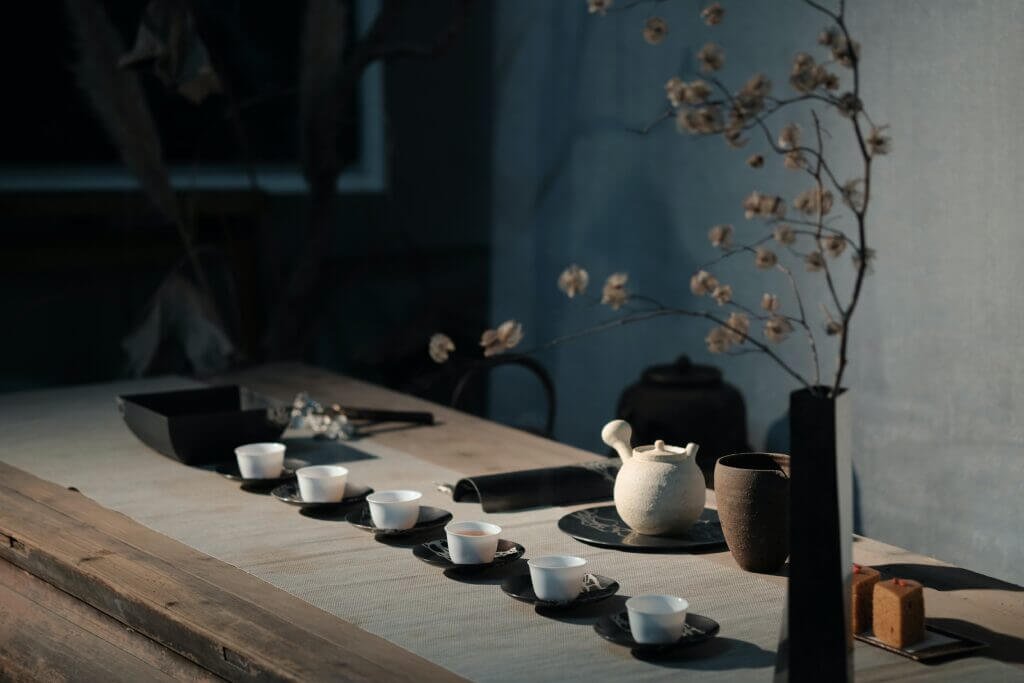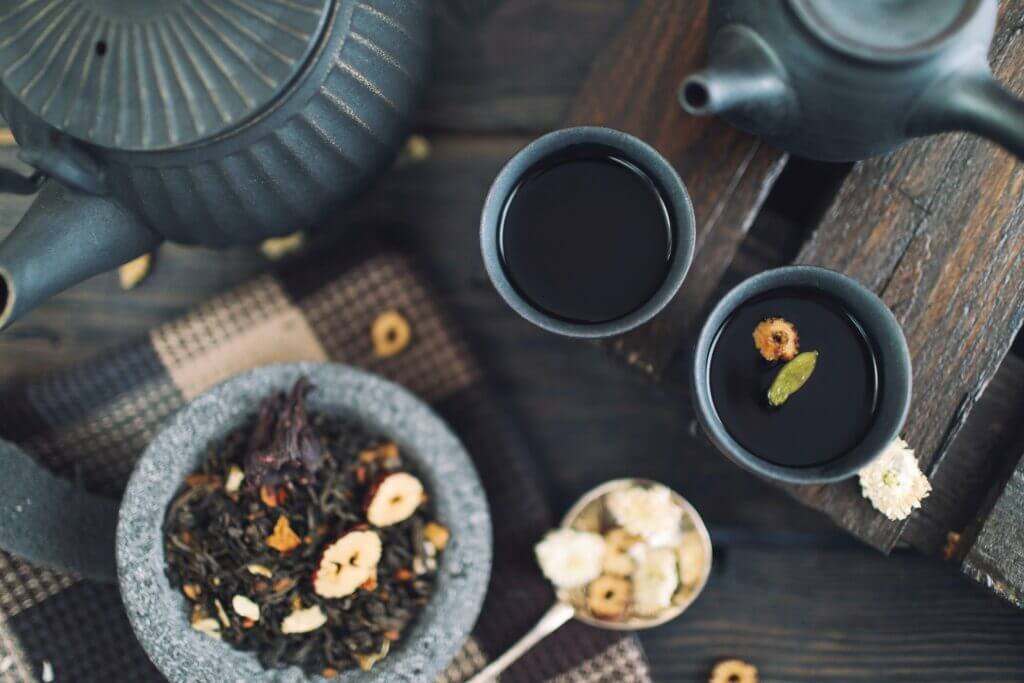Specialty tea is a world of flavors, aromas, and stories waiting to be explored. But as you embark on this delightful journey, you may come across terms like single-origin and blended specialty teas, and wonder what sets them apart. Well, fear not, dear tea enthusiast, for we are here to shed light on the differences between these two intriguing varieties. Single-origin teas boast a distinct character, derived from a specific region, while blended teas are a harmonious fusion of flavors, carefully crafted by skilled tea blenders. So, grab your teacup and let’s immerse ourselves in the mesmerizing realm of single-origin and blended specialty teas.

Origin of the tea leaves
Tea is one of the most beloved and widely consumed beverages in the world. The origin of the tea leaves plays a significant role in determining the overall quality and characteristics of the tea. Single-origin teas and blended specialty teas are two distinct categories that highlight the importance of the tea’s origin.
Single-origin teas
Single-origin teas are sourced from a specific region or estate, which allows for a unique and authentic flavor profile. These teas are often associated with terroir, the specific environmental conditions and cultivation practices that contribute to the tea’s taste and aroma. The focus on a single origin ensures that tea enthusiasts can experience the true essence of a particular growing region, where factors such as soil composition, altitude, and climate come together to create a distinctive tea.
Blended specialty teas
On the other hand, blended specialty teas combine leaves from multiple regions or estates to create a harmonious flavor. Blending allows tea makers to create a consistent taste and aroma that can be replicated year after year. This approach also gives them the flexibility to adjust the flavor profile by combining different characteristics from various tea gardens. Blended specialty teas are carefully crafted by experts who skillfully select and combine teas to create a well-balanced and complex brew.
Taste
The taste of tea is a crucial factor in determining its appeal to tea lovers. Single-origin teas and blended specialty teas offer distinct taste experiences.
Single-origin teas
Single-origin teas often exhibit a bold and pronounced flavor due to the unique characteristics of the growing region. For example, a single-origin black tea from Assam, India, is known for its rich and malty taste, while a single-origin green tea from Japan tends to have a grassy and slightly vegetal flavor. These teas allow you to explore the nuances of different growing regions and appreciate the natural flavors that the tea leaves have to offer.
Blended specialty teas
Blended specialty teas, as the name suggests, offer a harmonious and balanced taste. The blending process enables tea experts to create a combination of flavors that complement each other, resulting in a well-rounded and consistent brew. Blends often aim to highlight specific qualities, such as smoothness, sweetness, or complexity. This makes blended specialty teas a popular choice for those seeking a reliable and enjoyable tea-drinking experience that appeals to a broader range of tastes.

Aroma
The aroma of a tea can greatly enhance the overall drinking experience, enticing and captivating the senses. Single-origin teas and blended specialty teas offer distinct aromas that can transport you to different tea-growing regions.
Single-origin teas
Single-origin teas often boast a distinct and characteristic aroma that reflects the growing region’s unique environmental conditions. The aroma can vary from delicate and floral to bold and robust, depending on factors such as the type of tea leaves, the processing methods employed, and the specific geographical location. The aroma of single-origin teas adds depth and complexity to the overall sensory experience, allowing you to truly appreciate the tea’s origin.
Blended specialty teas
Blended specialty teas aim to create a well-balanced aroma that combines the best qualities of different tea leaves. The expertise of tea blenders comes into play as they carefully select and combine teas to achieve a desired fragrance. Blended specialty teas may offer a more consistent and predictable aroma compared to single-origin teas. The blending process can result in a bouquet of scents that harmonize together, creating an enticing aroma that invites you to indulge in a delightful tea-drinking experience.
Consistency
Consistency is an essential aspect of tea, as it ensures that each cup provides a reliable and enjoyable experience.
Single-origin teas
Single-origin teas can exhibit some variation in taste and aroma from batch to batch due to the unique characteristics of the growing region. Factors such as changing weather patterns and annual variations in the tea bushes’ growth can influence the flavor profile of single-origin teas. While this variation adds to the charm and authenticity of single-origin teas, it also means that each cup can be a slightly different experience.
Blended specialty teas
Blended specialty teas offer a high level of consistency, as they are carefully crafted to maintain a uniform taste and aroma. Tea blenders aim to create a consistent product that can be enjoyed by tea lovers year after year. This reliability makes blended specialty teas a popular choice among those looking for a consistent and familiar tea-drinking experience.

Price
When comparing single-origin teas and blended specialty teas, price can be a significant consideration for tea enthusiasts.
Single-origin teas
Single-origin teas often come with a higher price tag compared to blended specialty teas. This pricing reflects the unique characteristics and limited availability of teas sourced from specific regions or estates. The costs associated with cultivating and processing single-origin teas, coupled with the demand for their authenticity and quality, contribute to their higher price point.
Blended specialty teas
Blended specialty teas are generally more affordable compared to single-origin teas. The blending process allows for a larger quantity of tea to be produced, making it more accessible to a wider range of consumers. Blended specialty teas offer a cost-effective option for those seeking quality tea without breaking the bank.
Caffeine content
The caffeine content in tea can vary depending on several factors, including the type of tea leaves and the brewing method. Both single-origin teas and blended specialty teas can offer different caffeine levels.
Single-origin teas
The caffeine content in single-origin teas can differ based on factors such as the type of tea leaves used, the growing conditions, and the specific processing methods. While black teas are generally known to have higher caffeine content, single-origin green teas and white teas may contain lower levels of caffeine. It’s essential to consider the desired caffeine level when choosing single-origin teas to suit your preferences and needs.
Blended specialty teas
Blended specialty teas can be crafted to cater to individuals who prefer varying levels of caffeine. Tea blenders have the flexibility to combine teas with different caffeine content to create blends that cater to a broader range of preferences. Whether you’re looking for an invigorating morning brew or a more relaxed evening cup, blended specialty teas can be tailored to suit your desired caffeine level.
Flavor profiles
The flavor profile of a tea is one of the key factors that determine its appeal. Both single-origin teas and blended specialty teas offer diverse and complex flavor profiles.
Single-origin teas
Single-origin teas showcase the distinct flavors associated with specific tea-growing regions. Each region imparts its unique characteristics to the tea, resulting in a range of flavor profiles. For example, a single-origin oolong tea from Taiwan may offer floral and fruity notes, while a single-origin black tea from Sri Lanka can have hints of caramel and citrus. Single-origin teas allow you to explore and appreciate the nuances of different growing regions, making each cup a delightful adventure.
Blended specialty teas
Blended specialty teas offer a wide range of flavor profiles that are carefully crafted by tea blenders. The blending process allows for the combination of teas with complementary flavors, resulting in a harmonious and well-balanced brew. Blended specialty teas can offer a symphony of flavors, from delicate and floral to bold and robust, depending on the desired taste profile. This versatility makes blended specialty teas a popular choice for those seeking diverse and enjoyable flavor experiences.
Health benefits
Tea is often associated with various health benefits due to its abundant antioxidants and other beneficial compounds. Both single-origin teas and blended specialty teas can offer these health benefits.
Single-origin teas
Single-origin teas, particularly those that are less processed, such as green or white teas, are known for their high antioxidant content. These teas are often touted for their potential health benefits, including improved heart health, increased metabolism, and reduced risk of certain diseases. Single-origin teas are appreciated for their natural properties and are often enjoyed for their unique flavor profiles as well as their potential wellness advantages.
Blended specialty teas
Blended specialty teas can also offer health benefits, depending on their ingredient selection. For example, blends that include ingredients like herbal infusions or botanicals may provide additional wellness benefits, such as relaxation or digestion support. Blended specialty teas can be enjoyed not only for their flavor complexity but also for their potential contributions to overall well-being.
Ethical considerations
Ethical considerations play a vital role in the tea industry, and both single-origin teas and blended specialty teas can have their own ethical implications.
Single-origin teas
Single-origin teas have the advantage of highlighting the efforts of specific tea-growing regions or estates. By sourcing single-origin teas from reputable and socially responsible producers, tea enthusiasts can support sustainable farming practices and fair labor conditions. Choosing ethically sourced single-origin teas allows you to appreciate the tea’s origin while making a positive impact on the tea industry and the communities involved.
Blended specialty teas
Blended specialty teas often require sourcing tea leaves from multiple origins. Ethical considerations come into play when selecting teas from different regions that adhere to responsible farming and labor practices. Tea blenders who prioritize ethical sourcing ensure that their blended specialty teas are crafted with a commitment to sustainability and fairness.
Popular choices
When it comes to tea preferences, both single-origin teas and blended specialty teas have their own loyal fan base.
Single-origin teas
Single-origin teas have gained popularity among tea connoisseurs and enthusiasts who appreciate the unique flavors and authentic experience they offer. People who enjoy exploring different growing regions and discovering the nuances of each tea’s origin often gravitate towards single-origin teas. Some popular choices among single-origin teas include Darjeeling from India, Matcha from Japan, and Assam from India.
Blended specialty teas
Blended specialty teas have a wide appeal, catering to a larger audience looking for consistent flavors and reliable quality. Tea lovers who enjoy a balanced and well-rounded cup of tea often find satisfaction in blended specialty teas. Some popular choices among blended specialty teas include Earl Grey, English Breakfast, and Moroccan Mint blends.
In conclusion, both single-origin teas and blended specialty teas have their own unique qualities that cater to different tastes and preferences. Single-origin teas provide an opportunity to explore the authenticity and natural flavors of specific growing regions, while blended specialty teas offer a harmonious blend of flavors that appeal to a broader audience. Whether you are seeking a bold and pronounced experience or a well-balanced and consistent brew, the world of tea offers a diverse range of options to suit your individual preferences and enrich your tea-drinking journey.


